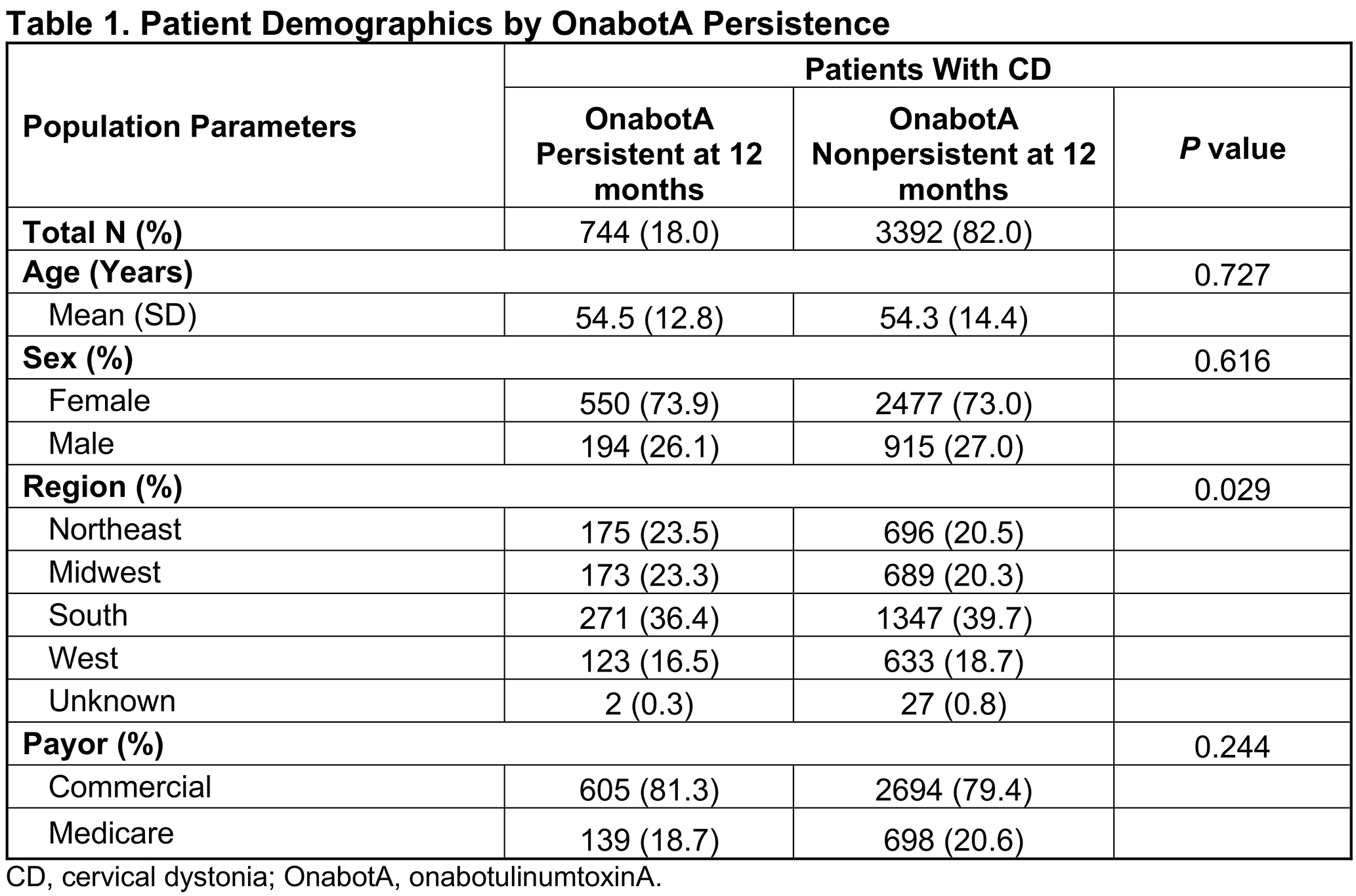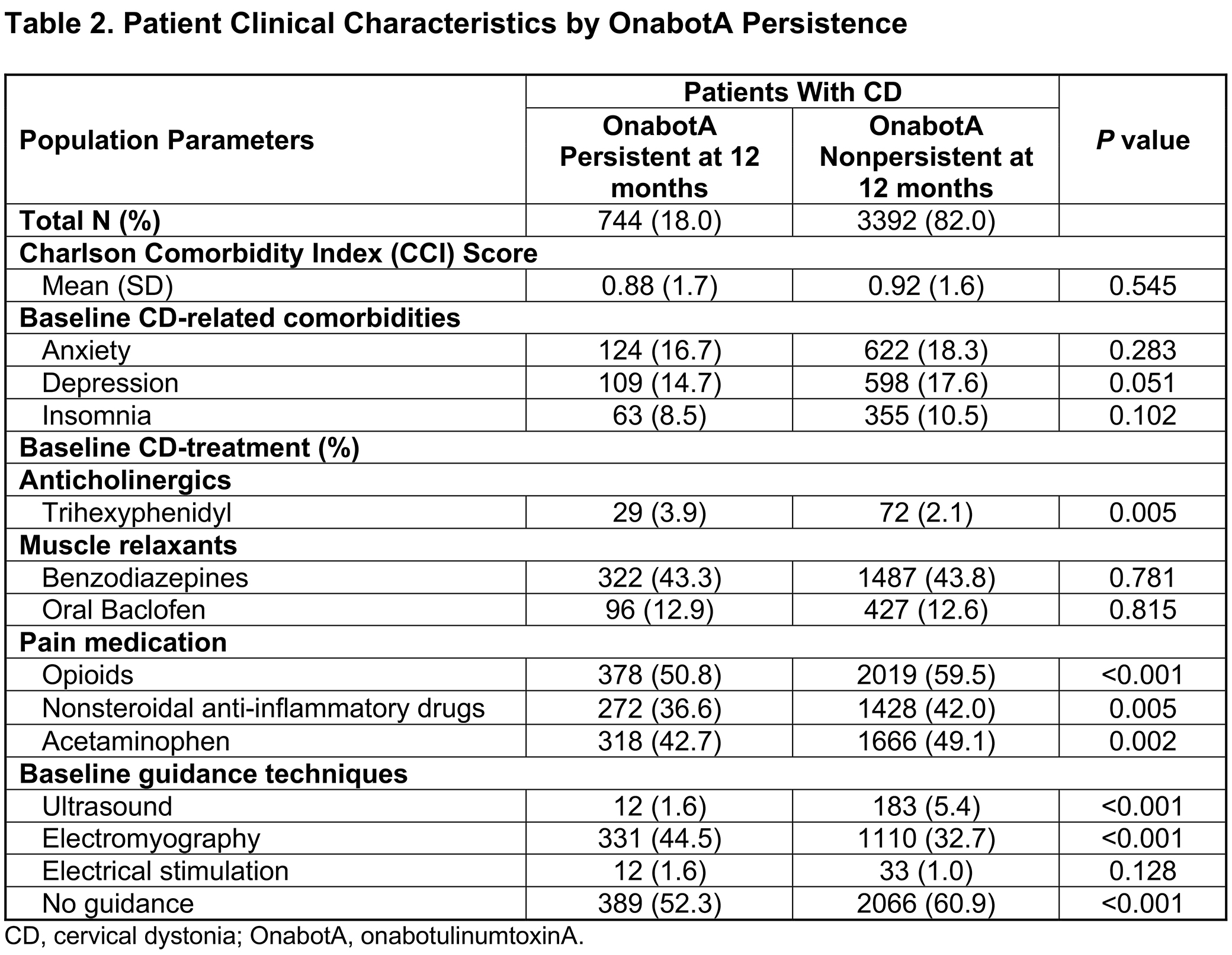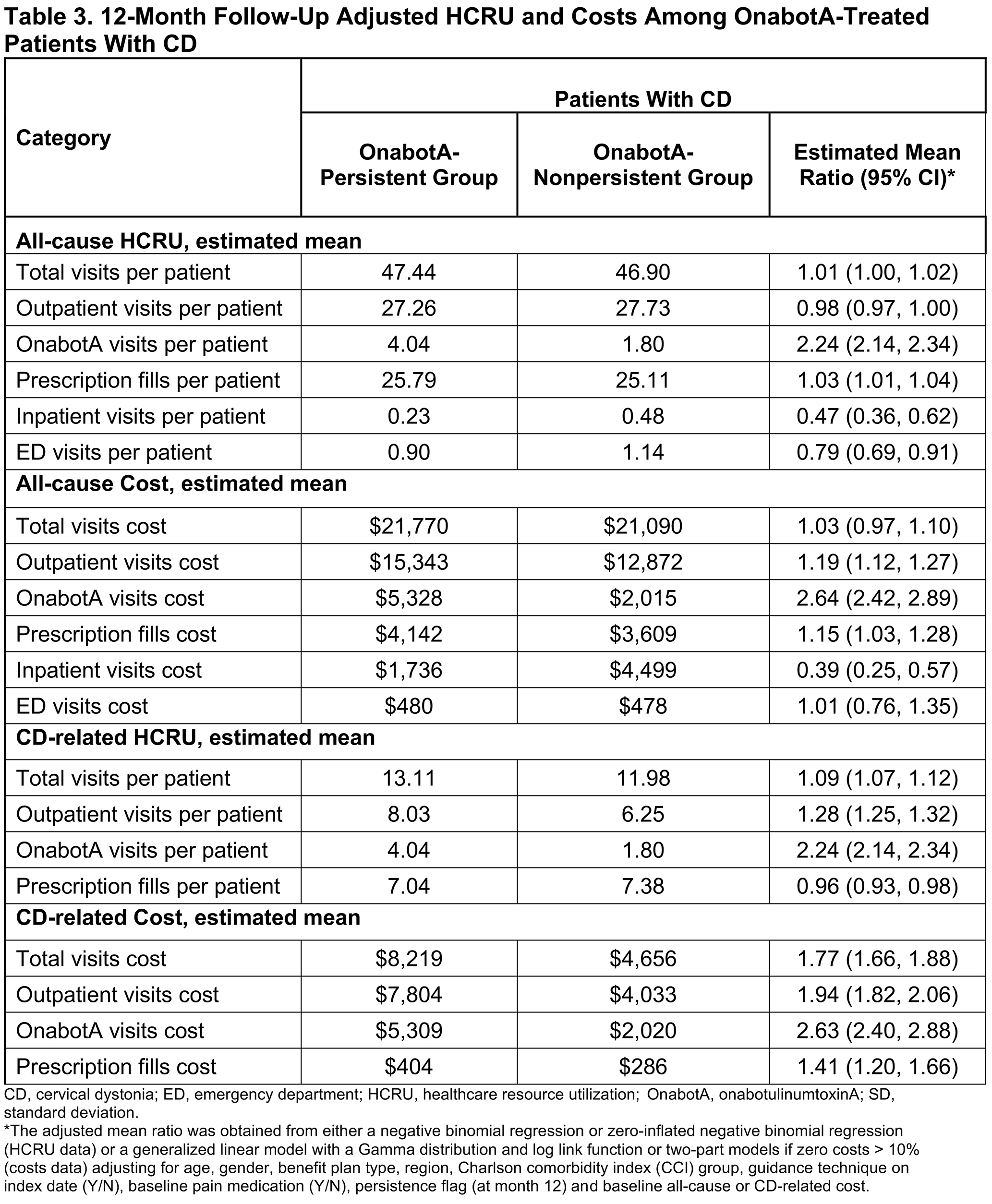Category: Dystonia: Clinical Trials and Therapy
Objective: To compare health care resource utilization (HCRU) and costs among patients with cervical dystonia (CD) in the US who are persistent vs nonpersistent with onabotulinumtoxinA (onabotA) treatment.
Background: There is a lack of real-world evidence data on botulinum neurotoxin (BoNT) persistence, HCRU, and costs among patients with CD.
Method: This longitudinal cohort study used IBM MarketScan® Commercial and Medicare Supplemental Databases administrative claims data. Patients were identified with a first medical claim for onabotA and CD diagnosis between 1/1/2011 and 2/28/2019. A patient was considered nonpersistent if they had a treatment gap (>30 days) or switched to another BoNT. Anatomical localization (guidance) techniques, HCRU, and cost were assessed at 12 months between persistent and nonpersistent patients.
Results: 4136 onabotA-treated patients with CD were identified (mean age 54 yrs, 73% female). OnabotA users receiving electromyography during initial injection were more likely to be treatment persistent at 12 months than those receiving ultrasound or no guidance technique [table2]. At 12 months, no significant differences were noted between onabotA-persistent (18%) and nonpersistent (82%) patients regarding age, sex, payor, and baseline comorbidities [table1][table2]. However, persistent patients had lower opioid use than nonpersistent patients [50.8% vs 59.5%; P<0.001) [table2]. 28% of patients who were nonpersistent due to a >30-day gap between onabotA doses restarted treatment during the study. OnabotA-persistent vs nonpersistent patients had similar overall all-cause total visits and total costs [table3], and similar all-cause and CD-related prescription fills, although prescription costs were slightly higher in the persistent group [table3]. Persistent patients had fewer all-cause inpatient visits and lower inpatient costs, but more CD-related outpatient visits and higher associated costs than nonpersistent patients [table3].
Conclusion: OnabotA persistence vs nonpersistence was associated with more CD-related outpatient visits and costs, but fewer all-cause inpatient visits and costs, similar all-cause prescription fills and costs, and similar all-cause visits and costs. More than a quarter of nonpersistent patients returned to treatment during the study.
To cite this abstract in AMA style:
K. Dashtipour, D. Charles, M. Sadeghi, M. Heath, A. Rava, J. Liu, H. Sun, Y. Dong, J. Lee. Persistence, Health Care Resource Utilization, and Costs Among OnabotulinumtoxinA-Treated Patients with Cervical Dystonia in the US [abstract]. Mov Disord. 2023; 38 (suppl 1). https://www.mdsabstracts.org/abstract/persistence-health-care-resource-utilization-and-costs-among-onabotulinumtoxina-treated-patients-with-cervical-dystonia-in-the-us/. Accessed January 4, 2026.« Back to 2023 International Congress
MDS Abstracts - https://www.mdsabstracts.org/abstract/persistence-health-care-resource-utilization-and-costs-among-onabotulinumtoxina-treated-patients-with-cervical-dystonia-in-the-us/



